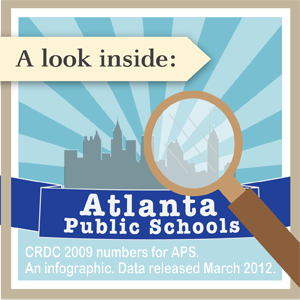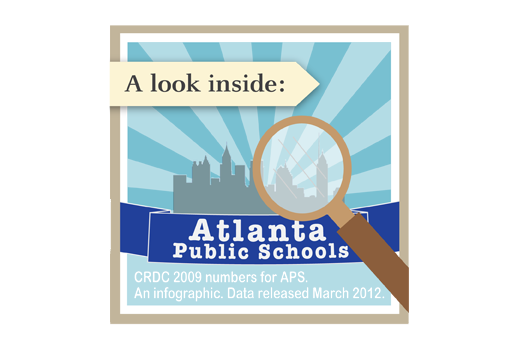 When the U.S. Department of Education released the latest installment of the Civil Rights Data Collection (CRDC), statistics covering the 2009-10 academic school year, last week it made headlines around the country.
When the U.S. Department of Education released the latest installment of the Civil Rights Data Collection (CRDC), statistics covering the 2009-10 academic school year, last week it made headlines around the country.
The CRDC represents a wealth of information from just about every corner of our country’s educational landscape. The report also shined some light on a number of gaps in educational opportunity and discipline on a national scale. Every state, school, district and county with a public school system is in there with detailed numbers attached.
The Office of Civil Rights, a division of the Department of Education, has been collecting CRDC information since 1968 to help identify gaps, disparities and trends in educational achievement and opportunities. The work was suspended briefly in 2006 under then President George W. Bush, but was reinstated and expanded by President Obama last year — collecting data for the first time on things such as law enforcement referrals for students.
“For the first time we have an incredible new source of data that tells us where opportunity gaps are in ways we’ve never seen before as a country,” Russlynn Ali, Assistant Secretary for Civil Rights at the Department of Education, said in a telephone briefing with reporters last week following the release of the first installment of the new CRDC data. “In recent years we have more data than ever before on identifying the achievement gap and where it exists.”
The New York Times and other media outlets have done some great and extensive reporting on national trends in discipline and opportunity gaps that surfaced from the data. Among the findings:
- Black students were more than three and a half times as likely to be suspended or expelled than their white peers.
- More than 70 percent of students in school-related arrests were black or Hispanic.
- Black and Hispanic students account for 44 percent of the students covered in the survey, but only account for 26 percent of students enrolled in gifted or talented programs.
- On average, teachers at high-minority schools were paid $2,251 less annually than their colleagues in other schools.
But one of the biggest benefits of this collection is the ability to drill down to any level, for any district, for any school, anywhere in the nation. Since the JJIE is located in metro Atlanta, we decided to take a look at the Atlanta Public School (APS) system.
Examining the data for the City of Atlanta, a number of the national trends seem to hold true. The percentage of black students suspended or expelled was high compared to the number in the school system, and black enrollment in gifted or talented programs was disproportionately low.
At first glance a handfull of findings from the self-reported data stick out. For example, the average teacher salary of $94,000 seems strikingly high. A look at six counties surrounding the APS district shows a wide range in average salaries:
- Atlanta - $94,058.90
- Cobb – $48,372.50
- DeKalb – $82,488.50
- Fulton (non-APS) – $38,759.80
- Gwinnett – $45, 680.30
- Clayton – $81,138.60
- Douglas – $125,846.00
But looking at the salary averages across districts can be misleading if you fail to dig into the reporting behind it, Department of Education spokesperson David Thomas said.
"Many comparisons are possible with the CRDC school-level expenditure data, particularly within-district comparisons," Thomas said in an e-mail. "However, data users must analyze the data between states and districts with caution due to variations in the district-selected inclusions and exclusions."
These inclusions and exclusions account for the wide range of reported average salaries in the Atlanta area. Here's a breakdown Thomas provided to help clarify:

The new database has only been live for about a week and a number of features – including the ability to easily track trends over the years of available data – are still in the works. If you want to see how your own school or district measures up, visit http://ocrdata.ed.gov/
Here’s a round up of Atlanta Public School statistics from the CRDC 2009:

This infographic was originally published on ClayDuda.com.
